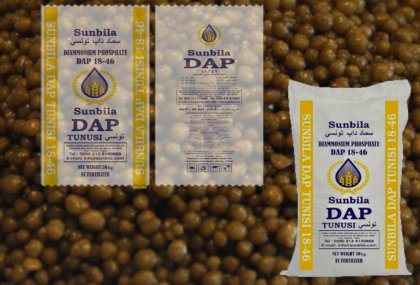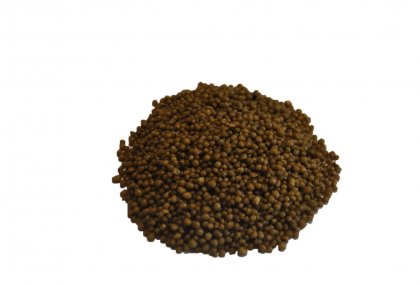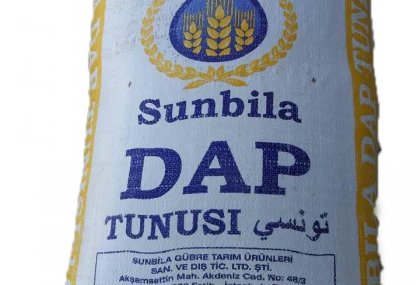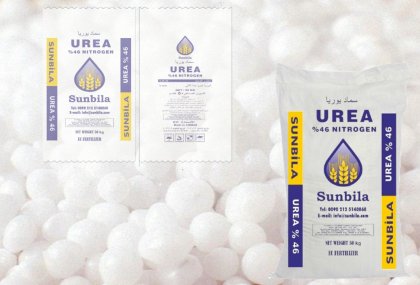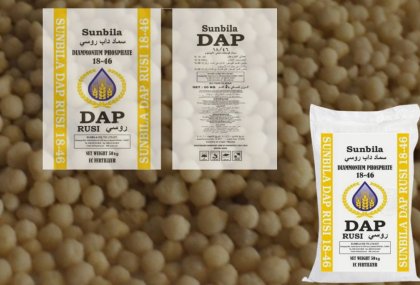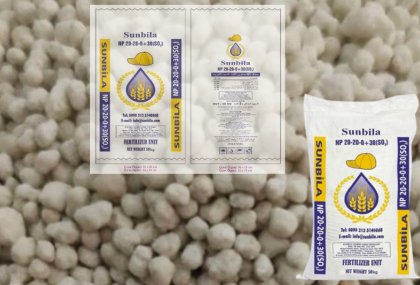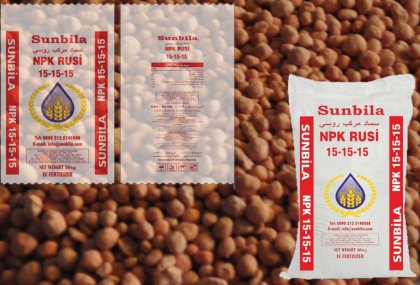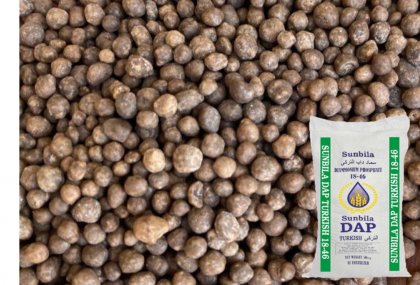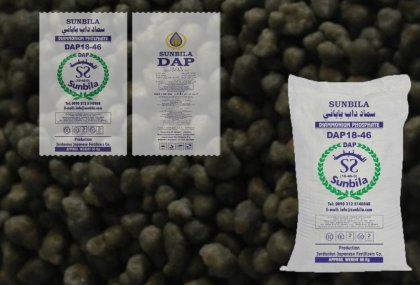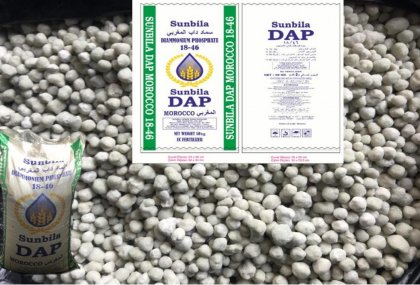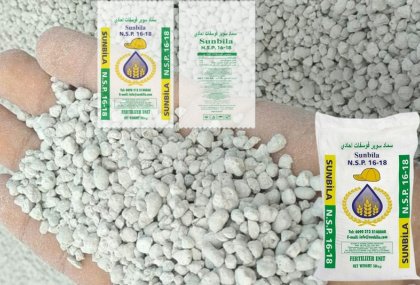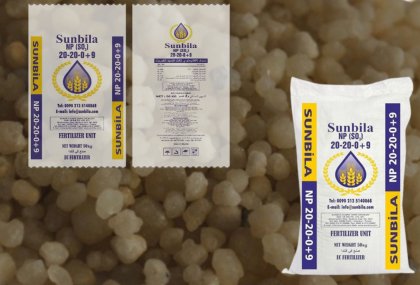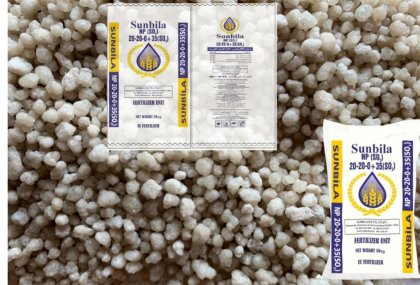DAP
Sunbila Fertilizer Agricultural Products Industry and Foreign Trade Co.Ltd
DAP 18-46 TUNUS
DAP is used as Phosphate fertilizer. It has an analysis of 18-46-0. Nutrients include P2O5 (46%) and ammoniacal nitrogen (18%). DAP provides the correct proportion of phosphate and nitrogen needed for farming wheat, barley and vegetables. It is also applied in the early stage of fruit orchard fertilization.
When applied as plant food, it temporarily increases the soil PH, but over a long term the treated ground becomes more acidic than before upon nitrification of the ammonium. It is incompatible with alkine chemicals because its ammonium ion is more likely to convert to ammonia in a high-pH environment. DAP has a high ammonium content and can cause germination injury if used in direct contact with seed. DAP is manufactured by reacting phosphoric acid and ammonia. It contains two ammonia molecules. In alkaline soil conditions, one of the ammonia molecules in DAP will revert to ammonia. DAP is alkaline with a high pH, exceeding 7.5. DAP is excellent for low pH or alkaline soils.
DAP is used as Phosphate fertilizer. It has an analysis of 18-46-0. Nutrients include P2O5 (46%) and ammoniacal nitrogen (18%). DAP provides the correct proportion of phosphate and nitrogen needed for farming wheat, barley and vegetables. It is also applied in the early stage of fruit orchard fertilization.
When applied as plant food, it temporarily increases the soil PH, but over a long term the treated ground becomes more acidic than before upon nitrification of the ammonium. It is incompatible with alkine chemicals because its ammonium ion is more likely to convert to ammonia in a high-pH environment. DAP has a high ammonium content and can cause germination injury if used in direct contact with seed. DAP is manufactured by reacting phosphoric acid and ammonia. It contains two ammonia molecules. In alkaline soil conditions, one of the ammonia molecules in DAP will revert to ammonia. DAP is alkaline with a high pH, exceeding 7.5. DAP is excellent for low pH or alkaline soils.



